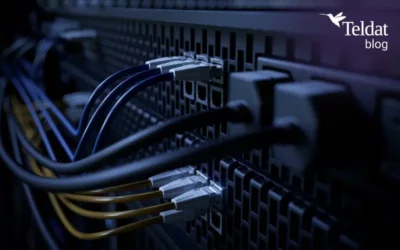
If we take into account that SDN technology is still in the implementation phase, what does this evolution actually involve? Basically, the idea is that network managers will define network operation policies – that is, what network administrators want the networks they control to do – and the network administrator’s intent will eventually be implemented in the network by a centralized orchestrator.
While this definition is found in numerous articles and reports (like the one from Gartner mentioned above), it doesn’t seem to introduce anything new to our current understanding of SDN, in all its different forms (also called SDx). So, what exactly is the evolution then? Well, it involves incorporating technologies such as Machine Learning – ML along with SDN orchestrators creating the necessary cocktail to form IBNS.
SDN orchestrators are centralized software systems responsible for configuring a network and saving administrators from having to concern themselves with the low-level details of each network component. The first orchestrators were employed in data centers. Subsequently, they moved from the data centers’ local networks into the complicated world of WAN – now known as SD-WAN. The ML function will be to add “intelligence” to the controllers, analyzing the data obtained by the network monitoring tools – ie Big Data – and, through the algorithms used in ML, identifying problem patterns and interacting with SDN controllers to reset the network, maintaining the policies defined by the administrators.
The following features are considered essential for an IBNS system:
- Translation and validation. Network administrators specify high-level policies that define how they want the network to work. These policies must be translated into final actions on the devices making up the network (switches, routers, etc.).The next step is for the IBNS to verify that these policies are executed correctly.
- Automated implementation. Administrators don’t act directly on the network components to implement policies. IBNS is responsible for implementing the actions and verifying compliance.
- Knowledge of network status. A key component of IBNS involves constantly monitoring the state of the network. Gathering data from the network is essential in order to validate actions performed on the network.
- Assurance and dynamic optimization. Through knowledge of the state of the network, IBNS will guarantee the policies defined by administrators by making dynamic corrections.
These features defined by Gartner imply the extensive use of Artificial Intelligence – AI – algorithms to learn network status through problem pattern detection. This knowledge will allow corrective action to be taken when deviations from the desired behavior occur. This combination of technologies – SDx, ML, BigData – might seem tremendously futuristic, especially when you consider that SD-WAN is an enormously complex technology requiring lots of human and development effort to add AI to the system. However, the arrival of 5G technology to the IoT is expected to increase the number of connected devices to tens of billions and make it incredibly difficult for network administrators to manage them all – therefore AI will provide a great support for administrators.
A future with increasingly complex networks will be a good driver for the development and the implementation of IBNS technology and hence that is why, as with SDN / SD-WAN, R&D in Teldat is investigating various areas related to IBNS, so as to use this technology in our solutions and products in the future.

























